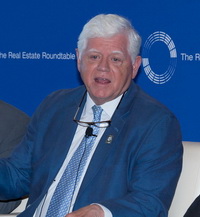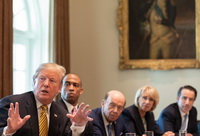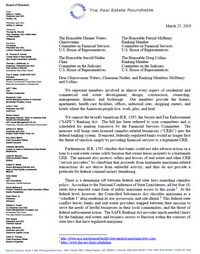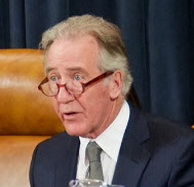Reps. Mike Quigley (D-IL) and Tom Rice (R-SC) reintroduced the bipartisan Jobs Originating through Launching Travel (JOLT) Act of 2019 (H.R. 2187) on April 9 to improve national security, increase international tourism, create jobs and reform visa laws.
 |
|
The Visit U.S. Coalition endorsed the introduction of the JOLT Act last year and again this month on its reintroduction. (Roundtable Weekly, July 27, 2018 and Visit U.S., April 9) The coalition, led by the U.S. Travel Association and the American Hotel and Lodging Association, includes The Real Estate Roundtable, U.S. Chamber of Commerce and the American Resort Development Association. |
The Visit U.S. Coalition endorsed the introduction of the JOLT Act last year and again this month on its reintroduction. (Roundtable Weekly, July 27, 2018 and Visit U.S., April 9) The coalition, led by the U.S. Travel Association and the American Hotel and Lodging Association, includes The Real Estate Roundtable, U.S. Chamber of Commerce and the American Resort Development Association.
The JOLT Act proposes to:
- Strengthen visa processing by setting timely goals for applicants;
- Create a pilot program at the State Department to utilize videoconferencing technology for applicants who lack easy access to U.S. embassies;
- Rename the Visa Waiver Program (VWP) the Secure Travel Partnership to more accurately reflect the realities of security and travel facilitation within the program;””
- Modify the VWP to prevent overstays, and increase the ability of secure countries to participate;
- Increase the ability of Canadians to stay up to 240 days per year;
- Improve coordination between the Department of Homeland Security and the State Department.
“Welcoming international travelers to American shores has undeniable benefits – from boosting the economy with spending at hotels, restaurants, and retail stores, to showing the world what makes America great,” said Visit U.S. Coalition spokesperson Andrea Riccio. According to the coalition, each overseas traveler spends approximately $4,200 when they visit the U.S., directly supporting 1.2 million jobs and $33.7 billion in wages. (Visit U.S. news release, April 9)
A panel discussion at last year’s Annual Roundtable Meeting focused on travel and tourism, economic growth and commercial real estate. Participants included Roger Dow, President and CEO, U.S. Travel Association; Katherine Lugar, (former) President and CEO, American Hotel & Lodging Association; Senator Amy Klobuchar (D-MN) and Anthony E. Malkin (Chairman and CEO, Empire State Realty Trust). (Roundtable Weekly, June 15, 2018)












